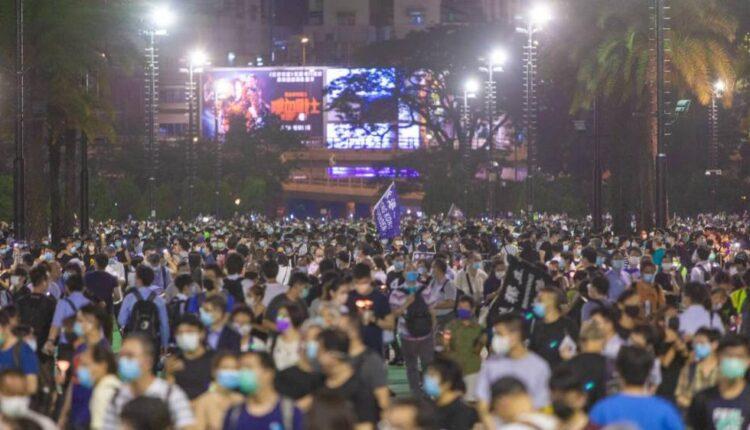Editor’s note: CNN will be launching the Meanwhile in China newsletter on June 21, a three-times-a-week update exploring what you need to know about the country’s rise and how it impacts the world. Sign up here.
Friday marks the 32nd anniversary of the Chinese government’s brutal crackdown on pro-democracy protesters in and around central Beijing in the early hours of June 4, 1989.
For an event that happened almost 2,000 kilometers (1,200 miles) away, the Tiananmen Square massacre has become deeply embedded in Hong Kong’s psyche. That’s because for the past three decades, Hong Kong was the only place where major commemorations were held, including marches, church services, and huge candlelit vigils in the city’s Victoria Park.
After Hong Kong became part of China in 1997, the continuation of these events was always seen as a major litmus test for the city’s ongoing autonomy and democratic freedoms, supposedly guaranteed until 2047 by its de facto constitution, the Basic Law, under the principle of “one country, two systems.”The 30th anniversary in 2019 saw one of the biggest turnouts at the Victoria Park vigil, with organizers claiming some 180,000 people joined the commemoration (though police said it was closer to 40,000). That anniversary came amid escalating tensions over a proposed extradition bill between Hong Kong and China: just five days later, over a million people marched against it, and in the months that followed, the city was consumed by increasingly violent protests and police crackdowns. Read MoreIn the wake of those protests, Beijing introduced a national security law for Hong Kong, bypassing the city’s semi-democratic legislature to criminalize secession, subversion and collusion with foreign powers. That law has been used to crack down on a host of political activity, and almost every prominent pro-democracy politician and activist is either in prison — or headed there.
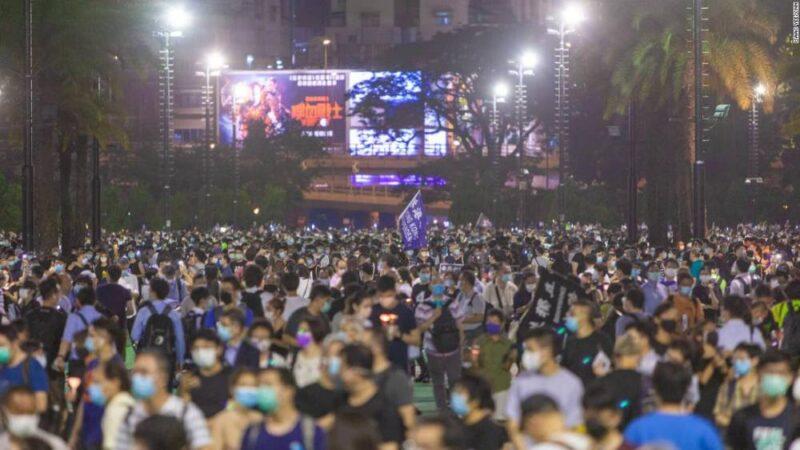
Thousands took part in a vigil for Tiananmen in 2020, despite the event being banned on coronavirus grounds. As talk of the law rumbled ahead of its abrupt passing on June 30 last year, many saw June 4, 2020, as potentially the final opportunity for a major commemoration. Despite authorities banning the Victoria Park vigil on pandemic grounds, tens of thousands still turned out to mark the event peacefully, and police took a hands-off approach — though subsequently arrested and charged a number of activists deemed to have “organized” the protest. This year, the gloves are off. The city’s Security Bureau said Saturday that any rally on June 4 would be deemed an unauthorized assembly, and “no one should take part in it, or advertise or publicize it, or else he or she may violate the law.”Offenders could face up to five years in prison, while those promoting the event could be jailed for up to 12 months, the bureau added. Already this week one activist — known locally as Grandma Wong — was arrested for staging a solo Tiananmen protest, while the city’s recently reopened June 4 Museum was forced to shut again. Organizers of the candlelit vigil have canceled the event for the first time in over 30 years, asking instead that people “mourn June 4 with perseverance and wisdom, under lawful, safe, peaceful and rational circumstances, in their own way, at the right time and place,” though that didn’t stop one of them being detained in the early hours of Friday. Likely the safest way to remember Tiananmen will be behind closed doors — similar to how the event is marked in mainland China, by the few who still choose to remember.
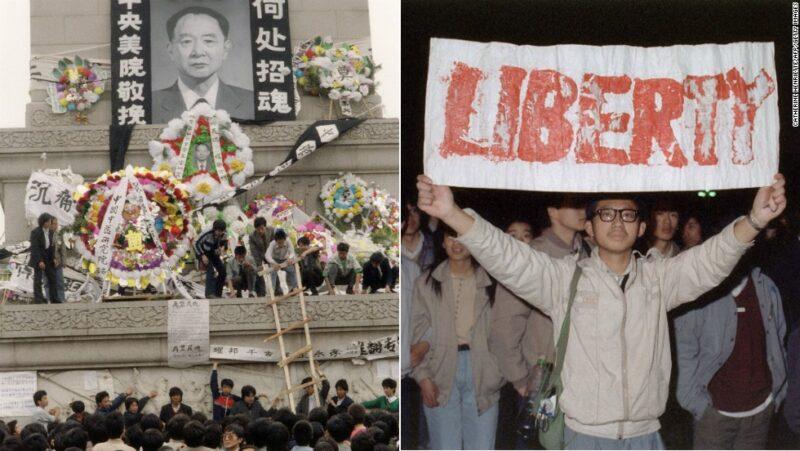
Photos: 1989 Tiananmen Square crackdownTimeline: Tiananmen Square crackdown – Ousted General Secretary of the Communist Party, Hu Yaobang, dies at age 73 on April 15, 1989. The next day, thousands of students gather at Tiananmen Square to mourn him — Hu had become a symbol of reform for the student movement. A week later thousands more marched to Tiananmen Square — the start of an occupation that would end in a tragic showdown.Hide Caption 1 of 19
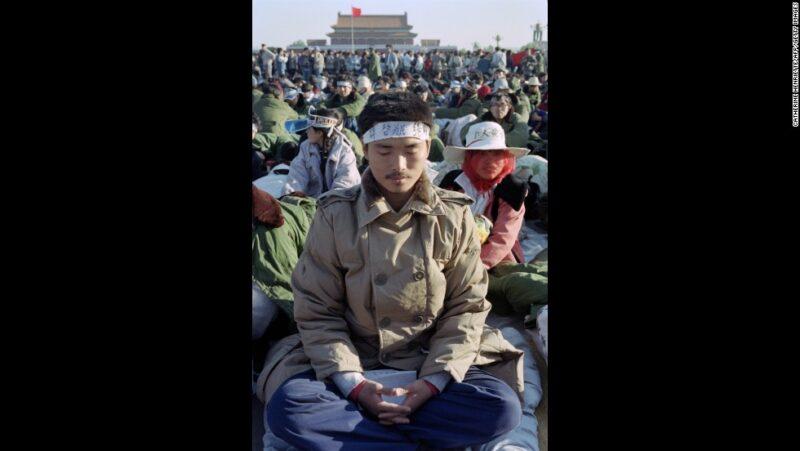
Photos: 1989 Tiananmen Square crackdownNil by mouth – May 13, 1989, student demonstrations at Tiananmen Square escalate into a hunger strike with thousands taking part and calling for democratic reforms. Hide Caption 2 of 19
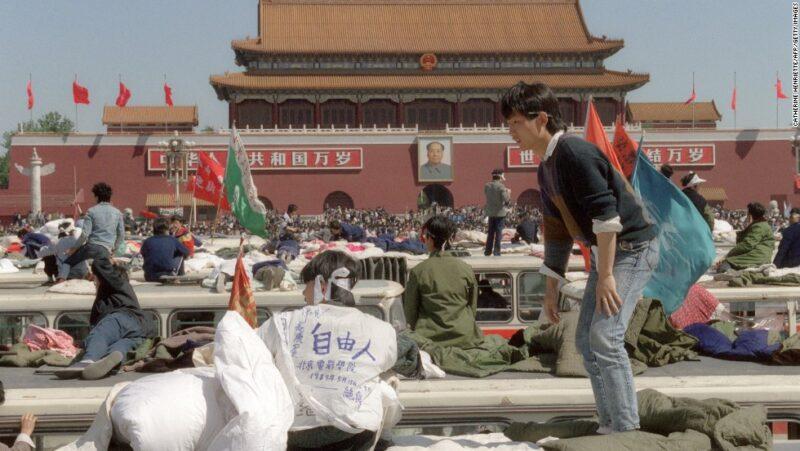
Photos: 1989 Tiananmen Square crackdownTiananmen sit in – Student hunger strikers camp out on top of buses parked at Tiananmen Square.Hide Caption 3 of 19
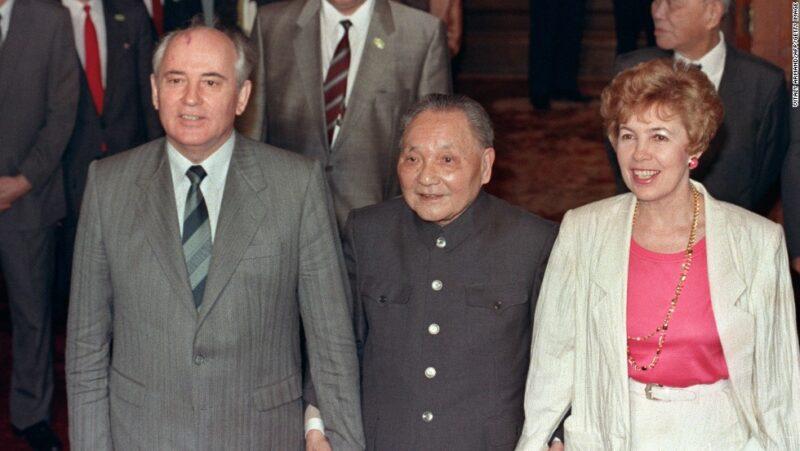
Photos: 1989 Tiananmen Square crackdownGorbachev visits – May 16, 1989, then Chinese President Deng Xiaoping (center) takes then Soviet President Mikhail Gorbachev and his wife Raisa by the hand at the Great Hall of the People. Gorbachev’s visit coincided with the student hunger strikes, forcing the official reception to be moved from Tiananmen Square to the airport — embarrassing for the Chinese leadership.Hide Caption 4 of 19
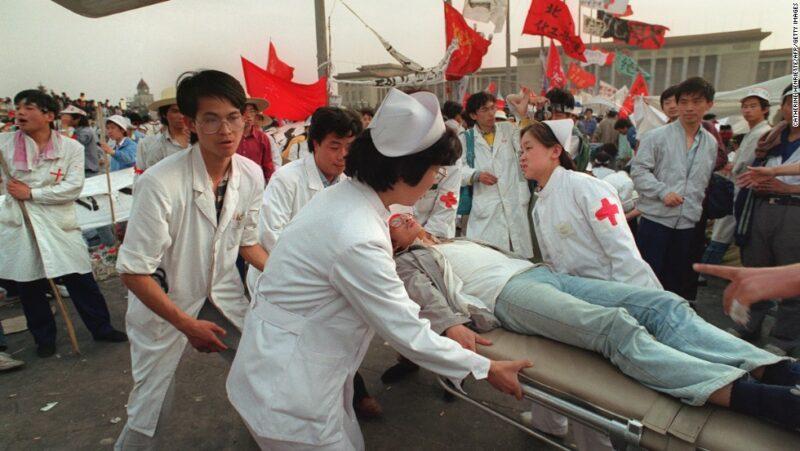
Photos: 1989 Tiananmen Square crackdownPrice of protest – May 17, 1989: Five days in and the hunger strike begins to take its toll on students. Paramedics evacuate ailing protestors from the square. Hide Caption 5 of 19
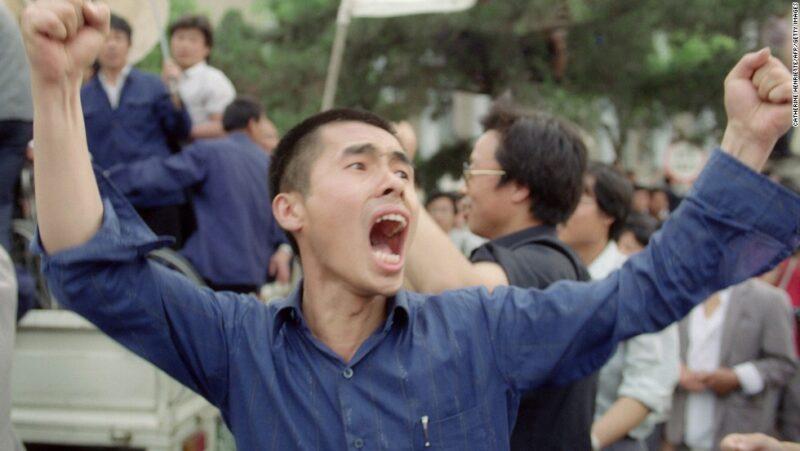
Photos: 1989 Tiananmen Square crackdownWitness to discontent – May 18, 1989 and Gorbachev has been in China for three days, witnessing street protests for each of those days. At the height of demonstrations, a million people were marching through Beijing.Hide Caption 6 of 19
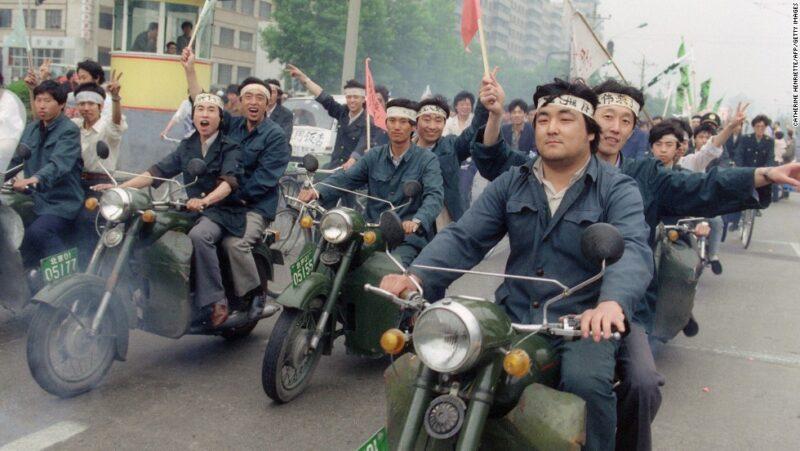
Photos: 1989 Tiananmen Square crackdownBiker backing – May 18, 1989, Chinese workers parade on motorbikes in support of student hunger strikers. Hide Caption 7 of 19
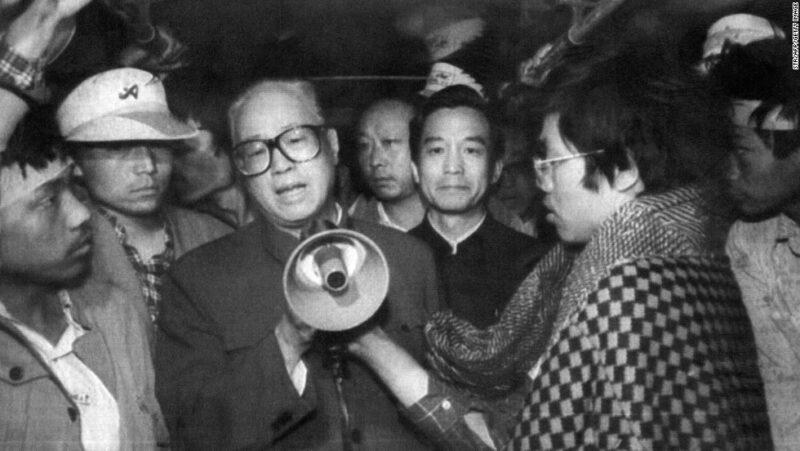
Photos: 1989 Tiananmen Square crackdownMartial law – May 19, 1989, the sixth day of hunger strikes. Communist Party General Secretary Zhao Ziyang arrives at Tiananmen Square to address the students. He begins his now-famous speech by saying: “Students, we came too late. We are sorry.” The next day, Premiere Li Peng declares martial law in parts of Beijing.Hide Caption 8 of 19
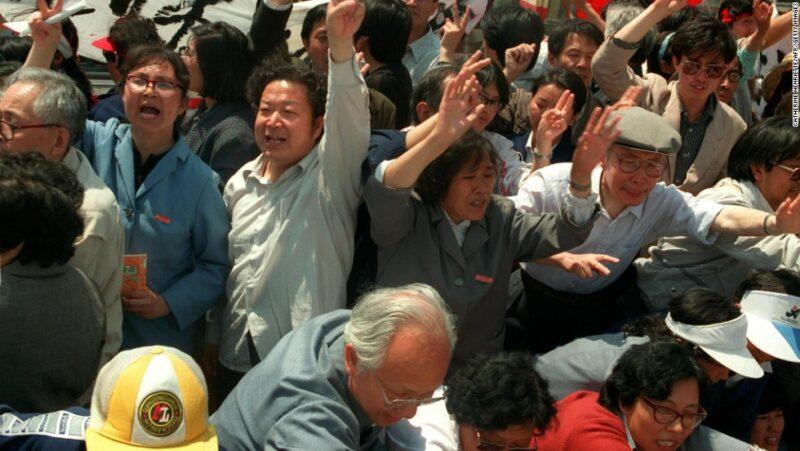
Photos: 1989 Tiananmen Square crackdownStudent-teacher relations – May 20, 1989, teachers from Beijing Normal University arrive at Tiananmen Square by the truckload to support their students after martial law was declared.Hide Caption 9 of 19
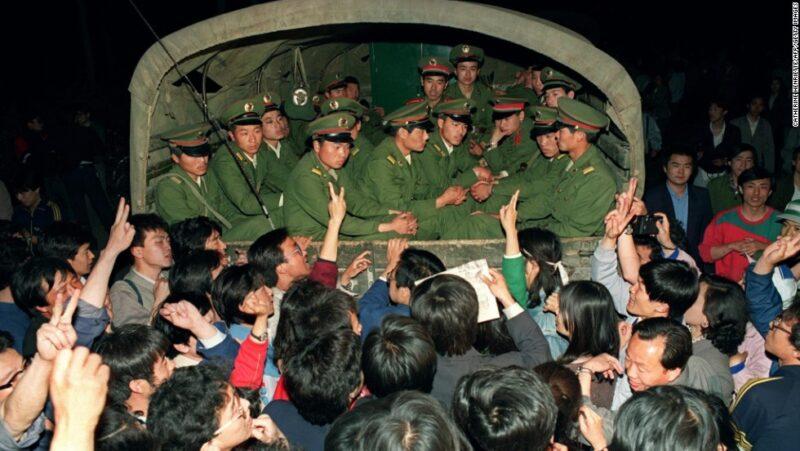
Photos: 1989 Tiananmen Square crackdownVictory sign – May 20, 1989, pro-democracy demonstrators raise their fists and flash the victory sign while stopping a military truck filled with soldiers on its way to Tiananmen Square.Hide Caption 10 of 19
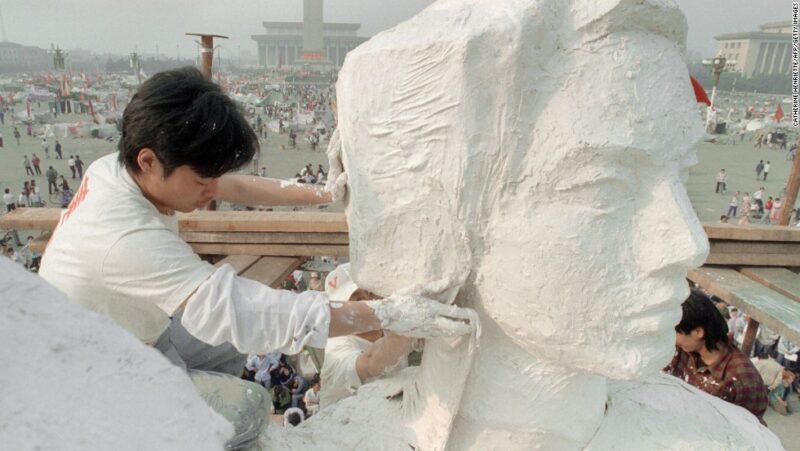
Photos: 1989 Tiananmen Square crackdownMonument to Heroes – May 30, 1989, students from the Central Academy of Fine Arts create a 10-meter-tall statue of the Goddess of Democracy to boost morale amongst student protestors in Tiananmen Square. Erected in just four days, the statue was unveiled in front of the Monument to the People’s Heroes.Hide Caption 11 of 19
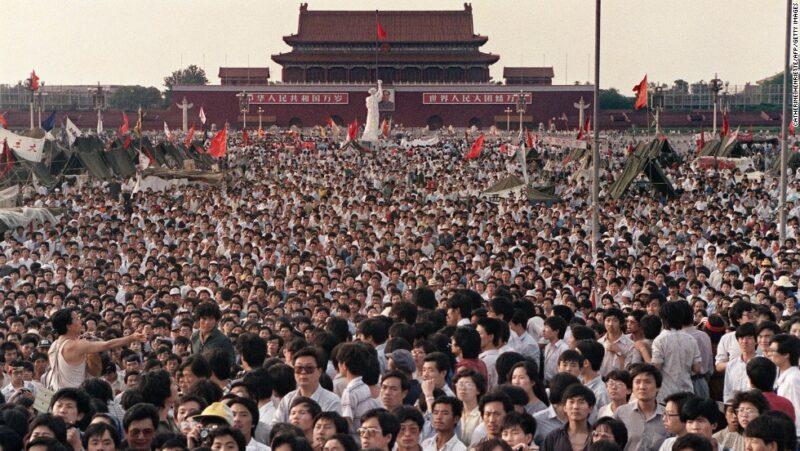
Photos: 1989 Tiananmen Square crackdownMass protest – This photo was taken on June 2, 1989, showing hundreds of thousands gathered around the Goddess of Democracy.Hide Caption 12 of 19
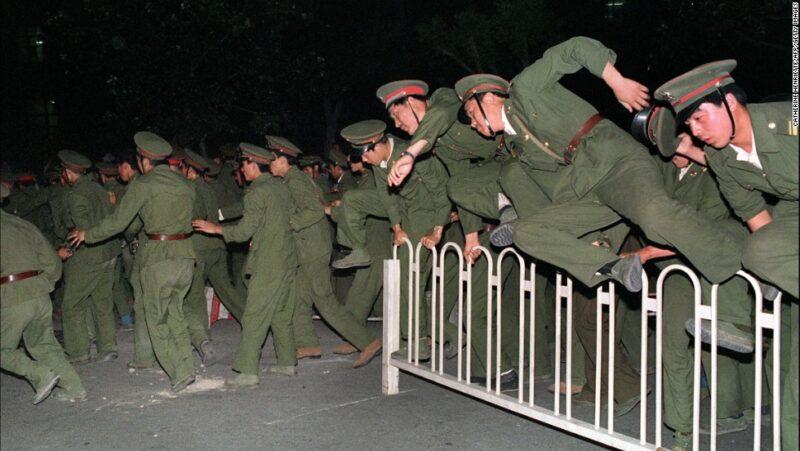
Photos: 1989 Tiananmen Square crackdownTroop movements – Countdown to the crackdown: Unarmed troops first approached Tiananmen Square on June 2.Hide Caption 13 of 19
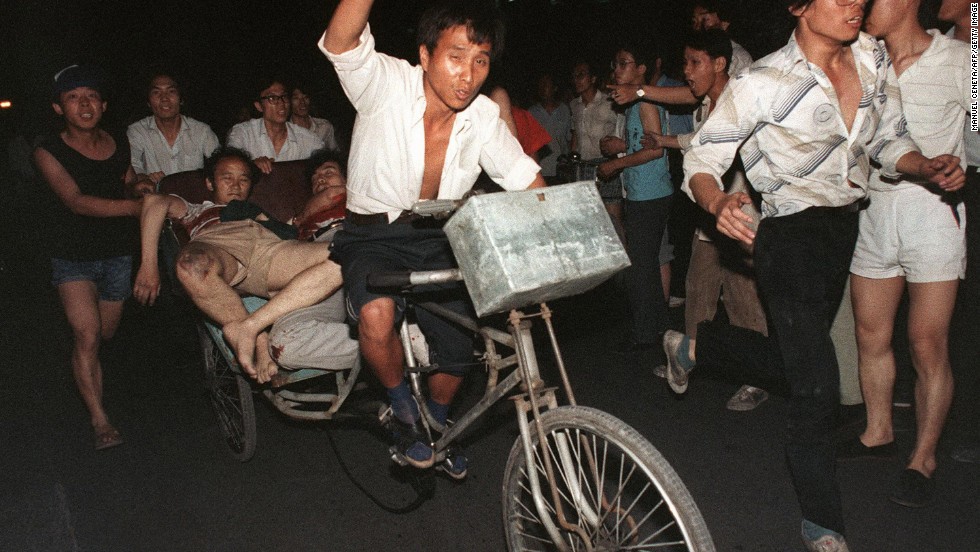
Photos: 1989 Tiananmen Square crackdownCrackdown – On the night of June 3 and into the early hours of June 4, armed troops and tanks moved in on students and other civilians in the areas around Tiananmen Square, opening fire on the crowds. Hide Caption 14 of 19
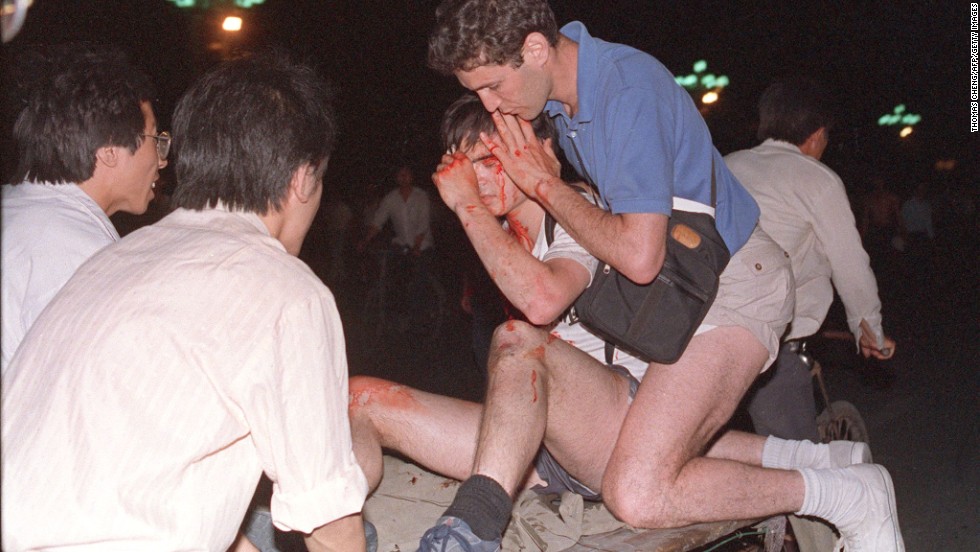
Photos: 1989 Tiananmen Square crackdownCaught in the middle – June 4, 1989, journalists covering the crackdown were caught in the line of fire. Hide Caption 15 of 19
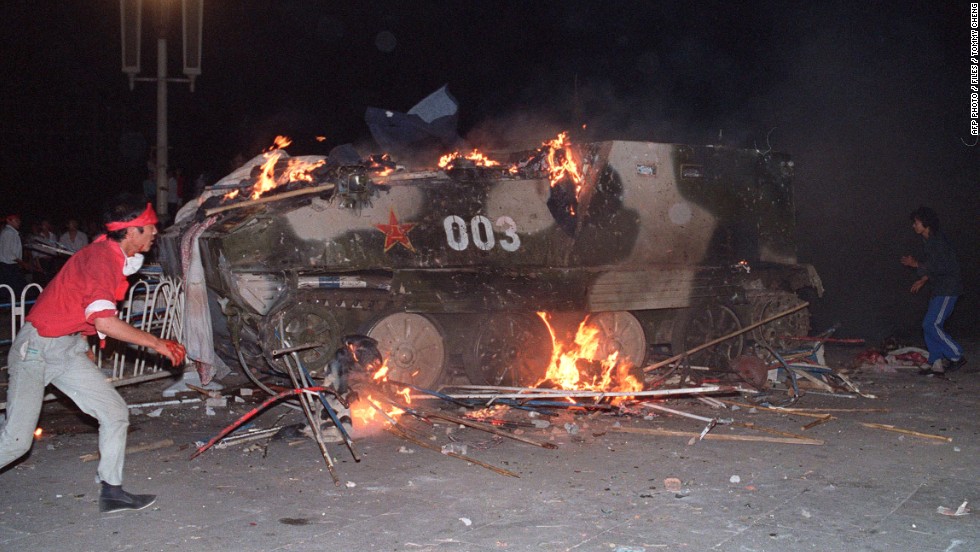
Photos: 1989 Tiananmen Square crackdownStudents fight back – June 4, 1989, students set fire to tanks. An official death toll has not been released but witnesses and human rights groups say hundreds were killed in the clash. Hide Caption 16 of 19
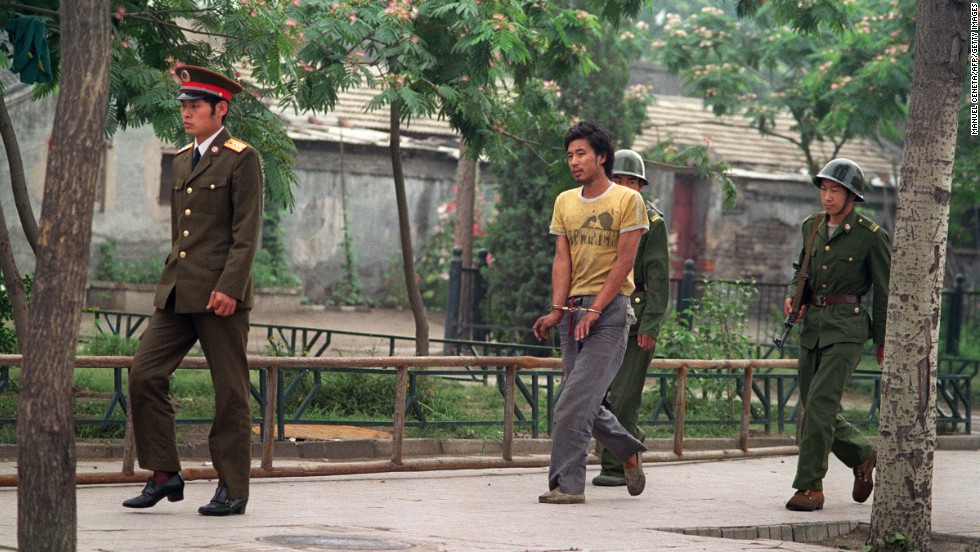
Photos: 1989 Tiananmen Square crackdownPunishment – In the weeks following June 4, activists who were directly or indirectly involved in the pro-democracy demonstrations were arrested.Hide Caption 17 of 19
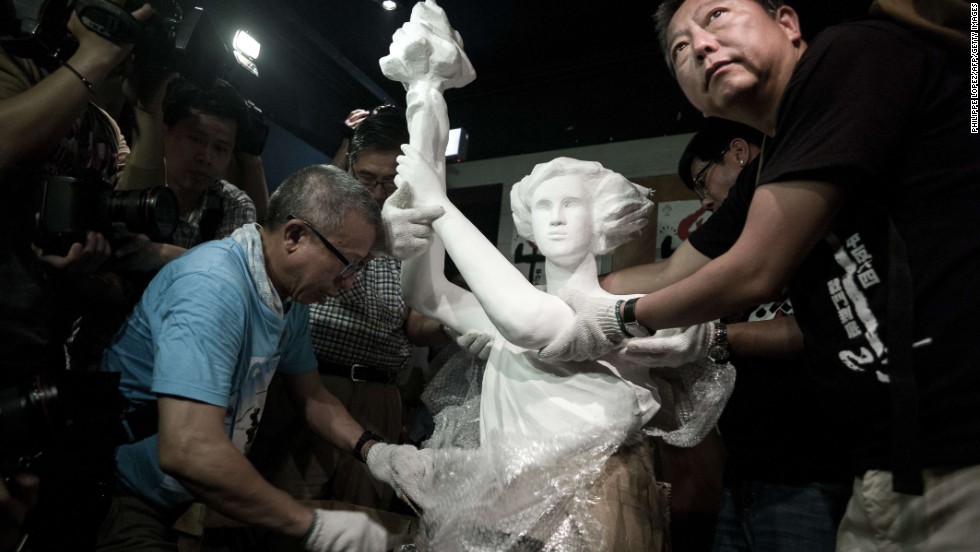
Photos: 1989 Tiananmen Square crackdownHong Kong vigil – Today, Hong Kong is the only Chinese territory where commemoration of the June 4 crackdown is allowed. Here, pro-democracy legislator Lee Cheuk-yan (left) unwraps a replica of the Goddess of Democracy at Hong Kong’s June 4 Museum that opened on April 24, 2014.Hide Caption 18 of 19
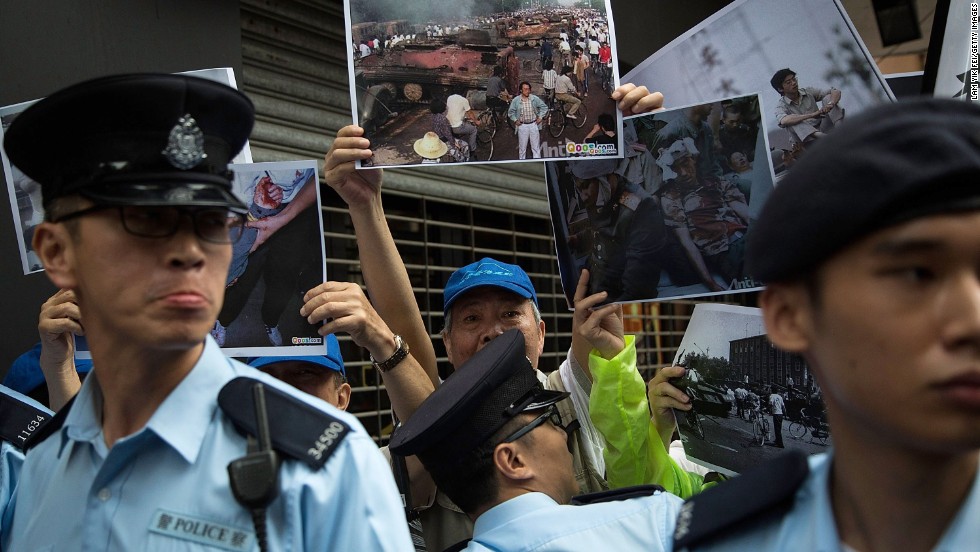
Photos: 1989 Tiananmen Square crackdownA pro-democracy group takes part in a rally outside the June 4 Museum on its opening day. A candlelight vigil commemorating the martyrs of the 1989 crackdown is held in the city’s Victoria Park each year on June 4, attended by thousands. Hide Caption 19 of 19



















Around Asia
- New Zealand is walking a delicate line trying to remain friendly with both China and its fellow Five Eyes countries, who are increasingly hostile towards Beijing.
- India’s monsoon season has begun, and the amount of rainfall looks to be normal, after several years of unusual weather patterns during an annual period critical for the country to stave off drought and other issues.
- A smoldering container ship is sinking off the Sri Lankan coast, heightening fears an oil and chemical spill could exacerbate one of the worst ecological disasters in the country’s history.
- Meanwhile in China, all ultra-marathons and trail-running events have been suspended indefinitely in the wake of a mountain race that saw 21 runners die in extreme weather last month.
Business of China
If China needed a sign Washington’s hostility to Beijing wasn’t going to thaw under Joe Biden, this is it.On Thursday, President Biden expanded a Trump-era ban on American investment in dozens of Chinese firms that Washington believes are linked to China’s military. Under the executive order, Americans are prohibited from owning or trading securities tied to 59 companies, citing the threat of Chinese surveillance technology. The original order, signed by President Donald Trump in November, applied to 31 Chinese companies that the administration said “enable the development and modernization” of China’s military and “directly threaten” US security.Biden’s new order goes into effect on August 2.Tech giants including smartphone maker Huawei and Hikvision, a major manufacturer and suppliers of video surveillance equipment, remain on the list, as do some of China’s biggest telecommunications firms, including China Mobile, China Telecommunications and China Unicom.Asked Thursday in Beijing about the expected Biden announcement — the move was reported earlier by Bloomberg — China’s Ministry of Foreign Affairs said Washington’s actions marked a “total disregard of facts” and “hurt the interests of global investors including those in the US.”Several of the companies that have been named in both orders have previously dismissed claims that they were tied to the Chinese military as groundless.The move suggests that Washington isn’t rushing to make amends with Beijing. Analysts have previously said that while Biden will likely strike a more predictable and diplomatic tone with China than Trump did, they don’t expect the administration to ease up on tech and trade policy.Even so, the countries are restarting talks on some issues. Beijing said Thursday it is now having “normal communication” with Washington on trade and the economy, citing recent discussions between Chinese Vice Premier Liu He, US Trade Representative Katherine Tai, and US Treasury Secretary Janet Yellen as “professional, frank and constructive.”– By Jill Disis and Kyle Blaine
China will stay shut until 2022
China has delivered over 700 million coronavirus vaccine doses, but may not relax border restrictions until next year at the earliest, a top health official said Thursday. Life in China has been relatively normal for months now, and vaccinations are roaring along — some 40% of the population is now inoculated against Covid-19 and it shouldn’t be long until China reaches herd immunity level. However, because of the success of the country in containing the virus, there is very little of it floating around to test whether its vaccines will stop transmission as well as deaths — unlike in the United States, where authorities know the vaccines are working because infection numbers are dropping, along with serious cases.This leaves China with some “unique difficulties” when it comes to reopening, said Feng Zijian, the deputy director General of China’s Center for Disease Control and Prevention, according to Bloomberg. “I don’t think we’ve got to that point — if we try to open even when 60% or 80% of population are vaccinated, it could still lead to a severe outbreak,” Feng said Thursday at a conference in the eastern city of Qingdao, the news outlet reported. “It largely depends on the technical considerations, societal consensus and political concerns.”This curse of success has become something of a pattern across Asia, with territories that excelled in the early response to the pandemic — Hong Kong, Taiwan, Australia — now struggling with vaccines, while some places in the West race ahead. Part of the problem is that when there is little risk of catching Covid, people are less willing to get vaccinated, which makes authorities more wary about opening up. After a rocky start, China has had one of the best responses to the pandemic globally, but that could come to haunt the country if officials are nervous to test that success by op.
Quoted and noted
“There is reasonable ground for suspecting that the publication of (2021hkcharter.com) is likely to constitute offences endangering national security.”— A letter from police to Israeli hosting company Wix, demanding it remove a website set up by several overseas Hong Kong activists. One of the activists, Nathan Law, shared it online, along with a statement demanding Wix restore access, which it did, claiming the website’s removal was an accident, in an email to Law. The company has yet to comment publicly.
Photo of the day
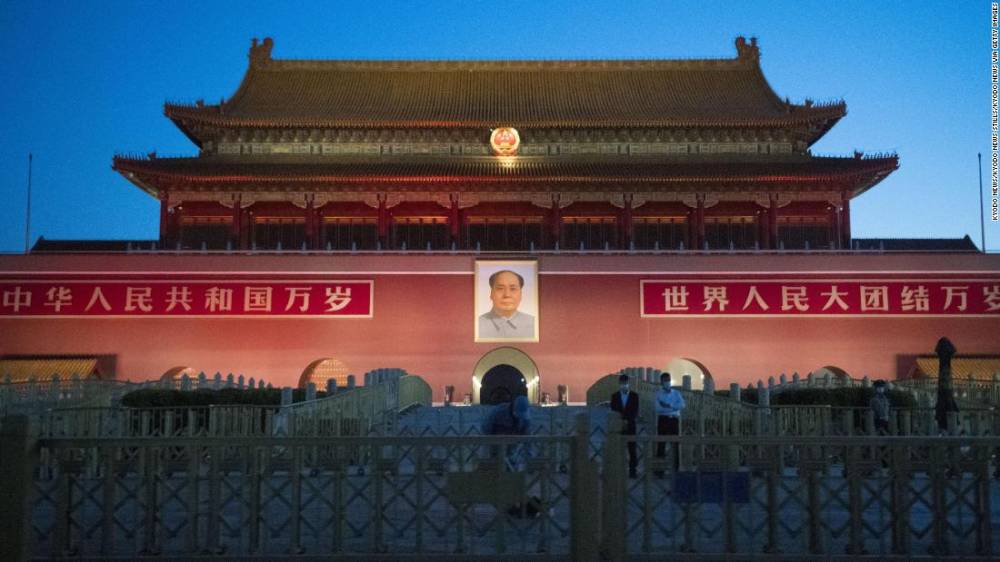
On this site, in 1989: The scene outside Beijing’s Tiananmen Gate in the early hours of June 4, 2021.
Source: edition.cnn.com

